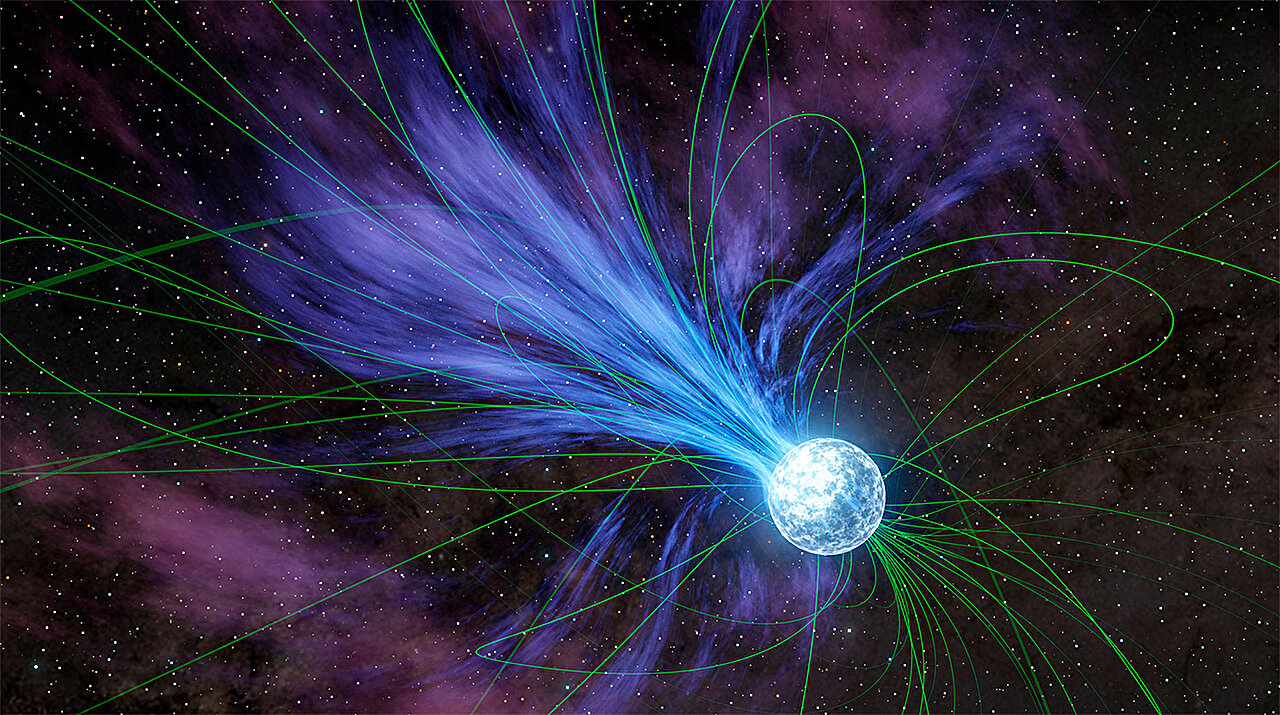Flares From Magnetized Stars Can Forge Planets’ Worth of Gold
In an ejection that would have caused its rotation to slow, a magnetar is depicted above losing material into space in this artist’s concept. The magnetar’s strong, twisted magnetic field lines (shown in green) can influence the flow of electrically charged material from the object, which is a type of neutron star. Credit: NASA/JPL-Caltech
Astronomers have discovered a previously unknown birthplace of some of the universe’s rarest elements: a giant flare unleashed by a supermagnetized star. The astronomers calculated that such flares could be responsible for forging up to 10% of our galaxy’s gold, platinum and other heavy elements.
The discovery also resolves a decades-long mystery concerning a bright flash of light and particles spotted by a space telescope in December 2004. The light came from a magnetar—a type of star wrapped in magnetic fields trillions of times as strong as Earth’s—that had unleashed a giant flare.
The powerful blast of radiation only lasted a few seconds, but it released more energy than the sun does in 1 million years. While the flare’s origin was quickly identified, a second, smaller signal from the star, peaking 10 minutes later, confounded scientists at the time. For 20 years, that signal went unexplained.
Now, a new insight by astronomers at the Flatiron Institute’s Center for Computational Astrophysics (CCA) in New York City has revealed that the unexplained smaller signal marked the rare birth of heavy elements such as gold and platinum. In addition to confirming another source of these elements, the astronomers estimated that the 2004 flare alone produced the equivalent of a third of Earth’s mass in heavy metals. They report their discovery in a paper published on April 29 in The Astrophysical Journal Letters.
(Source: phys.org)




